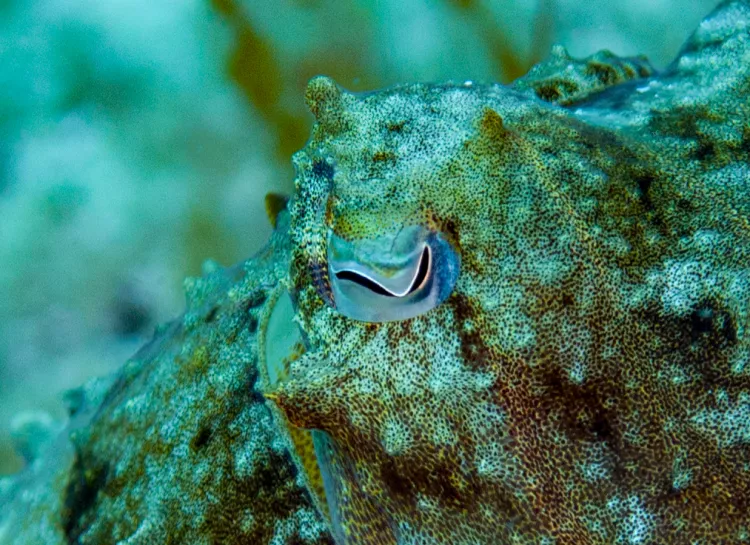Hang on… aren’t they colourblind?
In spite of being colourblind, the behaviour of cephalopods indicate they are able to distinguish colour, and this is due to the shape of their pupils.
One of the greatest puzzles in biology, to me anyway, is how and why cuttlefish are able to put on their dazzling displays of colour to signal other members of their species and camouflage by closely matching the coloration of natural backgrounds considering they are colour blind.
At least, studies have shown that with just sole known exception cephalopods lack multiple photoreceptor types and the multi-color visual pigments which are responsible for the trichromatic (and sometimes tetrachromatic) colour vision that are common in humans and many other animals. Also, cephalopods fail certain behavioral trials designed to test for color vision by opponent spectral channels. Obviously, their view of the world must be monochromatic. Or is it?
According to UC Berkeley graduate student Alexander Stubbs, not so. Cephalopods may actually be able to detect color – albeit in a manner profoundly differently from any other animal. The clue lies in the convoluted shape of their pupils which may be U-shaped, W-shaped or dumbbell-shaped such as the depicted cuttlefish.
What happens when light passes through the lens of an eye and is focused on the retina the lens also acts like a prism cause white light to split just a little into its component colours which are not focused on exactly the same spot causing an effect known a chromatic aberration. This phenomenon is well known among photographers as the cause of the unwanted colourful fringes around objects in photographs in particular when lower quality lenses are used.
Lens shapes
In humans and other mammals focusing takes place by changing the shape of the lens and the eye have round pupils that contract to pinholes to give us sharp vision, with all colors focused on the same spot. By contrast cephalopods focus by moving their retinas back and forth in relation to the lens. As different wavelengths come into focus at different distances from the lens, this movement can be exploited to achieve spectral sensitivity – in other words to discern between colours.
The unusual shapes of the lens which allows light to enter the eye and reach the retina from many directions can then be seen as an adaption that serves to maximize the spectral information - even at the expense of image acuity. In other words cephalopods may be trading sharpness for colour. Or as the researchers put it in their paper “The spectral content of a structured scene can be deduced by sweeping through focus (i.e., changing the lens to retina distance) and seeing how the image blurring varies.
- Log in to post comments

























